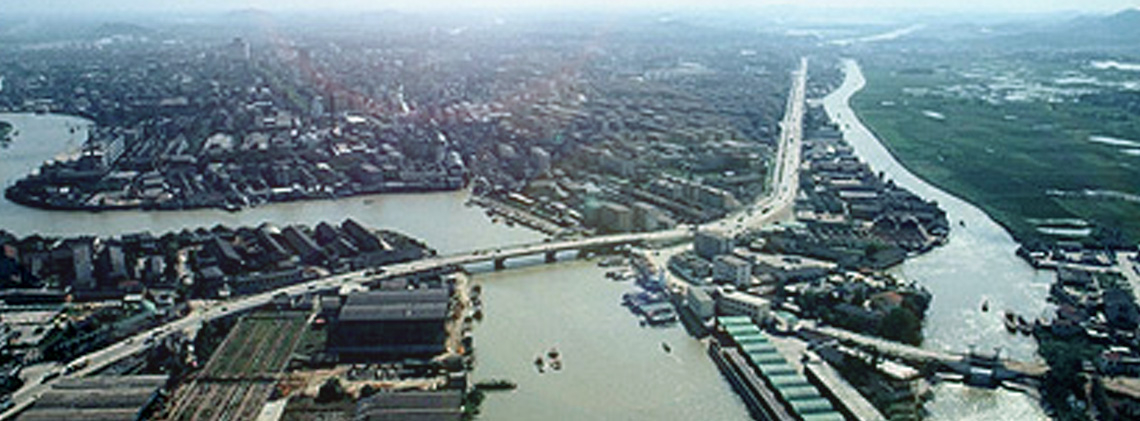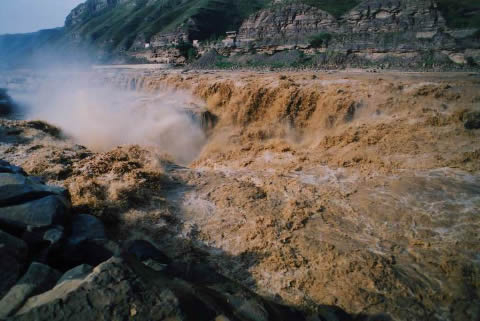
The Grand Canal
Splendid
Chi Culture
Topic
The Grand Canal
The Grand Canal is the world’s earliest, longest, and largest man-made watercourse. The 1,794 kilometer canal is ten times longer than the Suez Canal between the Red Sea and the Mediterranean, and twenty times longer than the Panama Canal between the Pacific and the Atlantic oceans. Comprised of the Sui-Tang Canal, the Beijing-Hangzhou Canal, and the East Zhejiang Canal, the Grand Canal, which starts north from Beijing and ends at Hangzhou in the south, connects the Hai, Yellow, Huai, Yangtze, and Qiantang rivers.
From the groundbreaking in 486 BCE to the completion of a fully navigable waterway in 1293 CE, the construction of the canal lasted approximately 1,800 years. Over the long period of history, the Grand Canal underwent three major phases of construction.
During the Spring and Autumn period in the fifth century BCE, vassal states were contending with one another for dominance. As the shipping of large quantities of troops, provisions, and weapons was beyond the transport capacity of natural waterways, states including Chu, Wu, Qi, and Qin started building canals to solve the problem. The state of Wu, established along the middle and lower reaches of the Yangtze River, had powerful naval troops and thus relied more heavily on water transportation than the other states. King Fuchai (528–473 BCE) of Wu ordered the construction of three waterways—Xuxi, Xupu, and Hangou, by means of which he defeated the state of Qi. Although Fuchai died when the state of Yue destroyed Wu, the canals have been used to this day.
China became a unified empire again during the Sui dynasty (581–618) in the seventh century. Emperor Yang (r. 604–618) of the Sui moved the capital to Luoyang, and to facilitate the transport of civilian and military supplies he ordered the construction of a 2,000-kilometer-long canal with Luoyang as the central hub connecting the north and south. The construction of the Sui canal lasted three decades and was a considerable expense both monetarily and in the lives of the millions of forced laborers who died or were injured. The completed Sui canal greatly facilitated the transport of grain, cloth, and other goods from the south of the Yangtze River to Luoyang.
Emperor Yang of the Sui abandoned himself to extravagance and excesses. His entourage during his three excursions on the canal to the south ranged from 100,000 to 500,000 people and included concubines, princesses, princes, ministers, Buddhist nuns and monks, Taoist priests, imperial physicians, cooks, and guards. The emperor dictated that all plants along the canal must be green during his tours, and local officials were required to fasten green silk and satin on the leafless trees. He also decreed that fireflies should be used to light up the canal in order to enhance the night scene, and the frustrated local officials pressed common people for fireflies in the required quantities. As a result, the few fireflies that escaped being caught along the canal were sold on the black market for prices higher than gold.
When Beijing became the Yuan capital in the thirteenth century, the Yuan emperor had the upper section of the canal renovated in order to link the north and the south without bypassing Luoyang. First, a new section of waterway was constructed to join the capital city and the middle section of the canal. The original curved canal was then straightened, shortening the water route between the capital and the south of the Yangtze River by nearly 700 kilometers. The renovated Yuan canal further facilitated the shipping of southern commodities to the northern capital.
The Grand Canal we see today owes a lot to the dredging project undertaken during the reign of the Qianlong emperor of the Qing dynasty in the eighteenth century. In the first half of the twentieth century, north-south railroads appeared in China and reduced water transport. In recent years, however, with the launch of the South-North Water Transfer Project, the Grand Canal once again plays an important role, and its renovation is currently underway.




